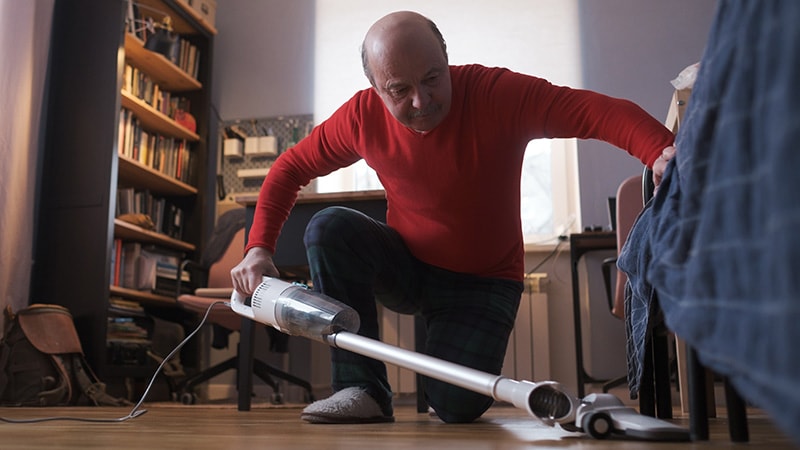Participating in certain physical and mentally stimulating activities may be protective against dementia, new research suggests.
In a large prospective cohort study, individuals who regularly engaged in strenuous exercise had a 35% less risk of dementia, those who consistently did household chores had a 21% lower risk, and those who reported seeing friends and family daily had a 15% lower risk compared with participants least adherent to these activity patterns.
In addition, the protective effects of these activities were found among participants both with and without a genetic risk for dementia.
“By engaging more frequently in healthy physical and mental activities, people may reduce their risk of dementia, irrespective of their inherited genetic susceptibility,” co-investigator Huan Song, MD, PhD, professor of epidemiology, West China Biomedical Big Data Center, West China Hospital, Sichuan University, told Medscape Medical News.
The findings were published online July 27 in Neurology.
Large, Prospective Study
The analysis included 501,376 participants from the UK Biobank, an ongoing prospective cohort study that recruited subjects aged 40 to 69 years during the years 2006-2010 from England, Scotland, and Wales. The mean age at recruitment was 56.53 years, and 54.4% were women.
Investigators collected information on sociodemographic data, lifestyle factors, and medical and health conditions. They accessed data on medical diagnoses and survival status from cross-linked national health registries.
Physical activity information came from the self-reported International Physical Activity Questionnaire. Categories included housework-related activity or leisure activity, such as strenuous sports, other exercise, walking for pleasure, and climbing stairs. Individuals reported whether they participated in these activities and if so, the frequency and duration.
Other physical activity categories included job-related activities, such as standing or walking at work or heavy manual labor, and transportation — whether by foot, cycle, car, or public transport.
Mental activities were related to social contacts, such as visiting friends and family, going to a pub or social club, and engaging in religious or another group activity; using electronic devices, such as watching television, playing computer games, and calling contacts on a cell phone; and intelligence.
In addition to considering high correlation and interactions between multiple modes of activity, researchers used principal component analysis to identify distinct behavior patterns presented as significant principal components (PCs).
They calculated the PC score, with higher scores indicating greater adherence to the specific pattern. They also categorized PC scores into low, moderate, and high groups.
Diagnostic codes were used to identify cases of dementia. During a mean follow-up of 10.66 years, there were 5185 cases of dementia, including 803 of vascular dementia, 1561 of Alzheimer’s disease, and 2697 of other dementias.
To account for the potential delay in diagnosing dementia and risk of reverse causality, researchers used a 1-year lag time. They started the follow-up for each participant a year after the recruitment date.
Covariates included demographic factors such as sex, age, race, and ethnicity, the socioeconomic factors of income and education, the lifestyle factors of alcohol and smoking, body mass index, deprivation index, comorbidities, and history of hypertension and hyperlipidemia.
Results showed links between physical or mental activities and dementia risk after considering the high correlation and interaction of these activities.
Significant Patterns
Looking at patterns, investigators found a lower risk for dementia with adherence to frequent vigorous and other physical exercise (hazard ratio [HR], 0.65 for high vs low PC score; 95% CI, 0.59 – 0.71) and housework-related activity (HR, 0.79 for high vs low; 95% CI, 0.72 – 0.85).
Physical activity may decrease risk for dementia through improving cerebral blood flow and release of brain-derived neurotrophic factors, the investigators note. Another possible mechanism is through antioxidant effects that delay damage in the brain.
For mental activity, there was a lower risk for dementia with greater adherence to a pattern of friend or family visits (HR, 0.85; 95% CI, 0.75 – 0.96) when comparing individuals with high vs low PC scores.
This result reinforces the benefit of social contacts, as social isolation might result in faster cognitive decline, the researchers write. They add isolation may indirectly influence functions of brain through increasing the risk for cardiovascular disease and depression.
Results were similar for different types of dementia, and across income levels, sex, and age groups. That findings were similar between participants 65 years or younger and those older than 65 years at baseline suggests the associations are likely applicable to both early- and late-onset dementia, note the investigators.
A unique aspect of the study was the exploration of susceptibility to dementia, which was measured by polygenetic risk score (PRS), presence of APOE genotype, and family history of dementia.
The HR for adherence to vigorous and other exercise patterns was 0.64 (95% CI, 0.52 – 0.77) in those with low genetic risk (PRS < 1st tercile), and 0.68 (95% CI, 0.57 – 0.79) in those with high genetic risk. Results were similar among participants with and without a family history of dementia, and between APOE ε4 carriers and noncarriers.
“As we got similar findings when performing separate analyses for subgroups of participants with different disease susceptibility to dementia, our findings underscore the universal importance of physical and mental activity on the reduction of dementia,” said Song.
The study could affect public health initiatives, she added.
“Although more research is needed to confirm our findings, our results encourage the development of exercise programs to prompt the early prevention of dementia by engaging more frequently in these healthy physical and mental activities,” Song said.
The study was funded by the National Natural Science Foundation of China, West China Hospital, Sichuan University, and National Clinical Research Center for Geriatrics. Song has disclosed no relevant financial relationships.
Neurology. Published online July 27, 2022. Abstract
For more Medscape Neurology news, join us on Facebook and Twitter.
Source: Read Full Article
